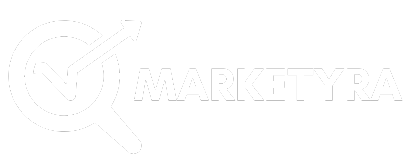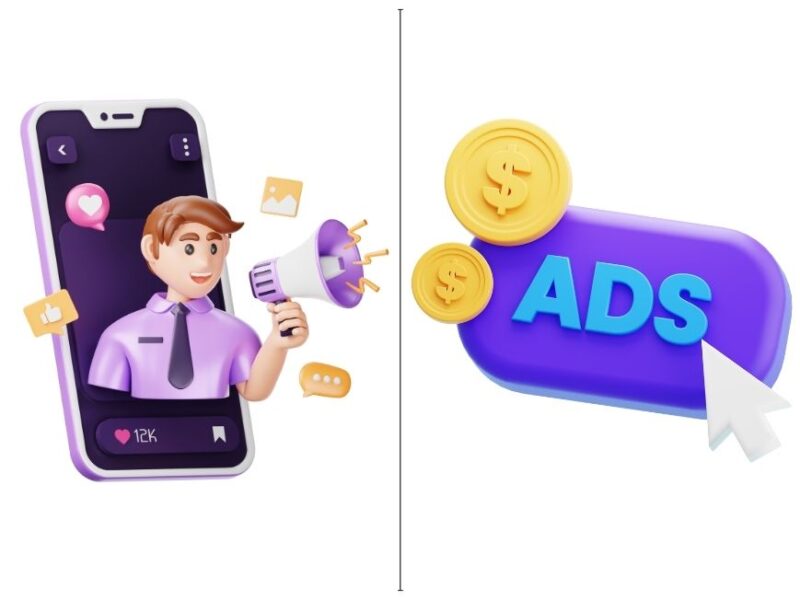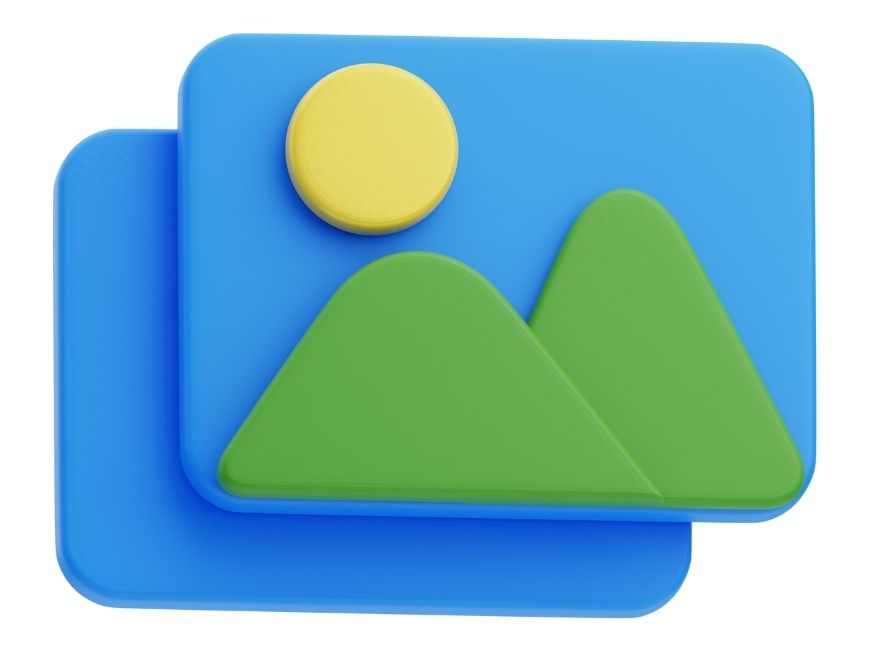On this page you will read detailed information about Organic Marketing vs. Paid Marketing.
In the ever-evolving landscape of digital marketing, understanding the distinction between organic and paid marketing is crucial for crafting effective strategies. As a marketing professional, you are tasked with navigating these two fundamental approaches to enhance brand visibility and engagement. Organic marketing, rooted in content creation and community building, offers sustainable growth through authenticity and trust. Conversely, paid marketing provides immediate visibility and precise targeting through financial investment. This article delves into the key differences between these strategies, equipping you with the insights needed to make informed decisions that align with your business goals and maximize your marketing efforts.
Understanding Organic Marketing: An Overview
The Essence of Organic Marketing
Organic marketing is the art of leveraging natural and unpaid strategies to attract and engage customers. Unlike paid marketing, which relies on financial investment for audience reach, organic marketing thrives on creativity, authenticity, and the strategic use of content. At its core, organic marketing aims to build lasting relationships with an audience through valuable and relevant content that resonates with their needs and interests.
Key Elements of Organic Marketing
One of the pillars of organic marketing is content creation. High-quality blog posts, informative videos, and engaging social media content are essential tools in your arsenal. When done effectively, these elements can enhance your brand’s visibility and credibility. Additionally, search engine optimization (SEO) plays a crucial role in organic marketing by improving your website’s ranking on search engine results pages without any direct ad spend. By optimizing your content for relevant keywords, you can organically attract your target audience over time.
The Power of Community and Engagement
Building a community around your brand is another fundamental aspect of organic marketing. By nurturing an engaged audience through regular interaction on social media platforms and forums, you foster trust and authenticity. Community engagement is not just about broadcasting your message; it’s about listening and responding to your audience’s needs and feedback. This approach not only strengthens customer loyalty but also encourages word-of-mouth marketing, which is a potent, cost-free form of promotion.
In summary, organic marketing is a sustainable approach that focuses on long-term growth and relationship building. It requires patience and consistency but offers the benefits of a loyal customer base and increased brand awareness without the need for direct financial investment in advertising.
Delving into Paid Marketing: How It Works
Understanding Paid Marketing Strategies
In today’s competitive digital landscape, paid marketing plays a pivotal role in ensuring that your brand reaches a targeted audience quickly and effectively. At its core, paid marketing involves investing financial resources to promote your content, products, or services through various advertising platforms. These platforms range from search engines to social media networks, each offering unique methods to capture the attention of potential customers.
One of the most common forms of paid marketing is Pay-Per-Click (PPC) advertising. This model allows you to display ads on search engines and pay a fee each time someone clicks on your ad. The advantage of PPC is its ability to drive immediate traffic to your site, allowing for a more controlled and direct approach to reaching potential customers.
Benefits of Paid Marketing
The primary advantage of paid marketing lies in its ability to deliver immediate results. Unlike organic marketing, which can take time to build momentum, paid marketing campaigns can be launched and reach a vast audience within minutes. This immediacy is particularly beneficial during product launches or time-sensitive promotions.
Moreover, paid marketing offers highly targeted advertising capabilities. You can fine-tune your audience filters based on demographics, interests, and behaviors, ensuring your message resonates with the right people. This precision not only maximizes your return on investment but also enhances the efficiency of your marketing efforts.
Measuring Success in Paid Marketing
An essential component of paid marketing is its emphasis on data analytics. Detailed metrics such as click-through rates, conversion rates, and cost-per-acquisition provide valuable insights into the performance of your campaigns. By analyzing this data, you can make informed decisions, optimize your strategies, and ensure the best possible outcomes for your marketing investments.
In summary, paid marketing is a powerful tool that, when executed effectively, facilitates rapid brand exposure and precise customer targeting. As you navigate the marketing landscape, balancing your strategies between organic marketing and paid marketing will be key to achieving sustained growth and success.
Key Differences Between Organic Marketing and Paid Marketing
Cost Dynamics
One of the most significant distinctions between organic marketing and paid marketing is their cost structure. Organic marketing relies on strategically crafted content and SEO efforts to build a brand’s visibility without direct financial investment. This approach emphasizes the long-term accumulation of authority and trust. Although initially cost-effective, it requires a substantial commitment of time and resources to maintain. In contrast, paid marketing involves direct financial expenditures to promote a brand’s message through advertisements on various digital platforms. This method provides immediate visibility and measurable results but demands a continuous financial outlay to sustain its effectiveness.
Audience Reach
Organic marketing typically generates a slower audience growth curve, as it depends on the natural dissemination of content through search engines and social media shares. This approach fosters deeper relationships with a target audience, cultivating a loyal community over time. Conversely, paid marketing offers the advantage of rapid audience reach. With precise targeting tools, businesses can immediately connect with specific demographics, thereby accelerating brand exposure. However, this may not always translate into long-term customer loyalty.
Longevity and Results
The longevity of results also differentiates these marketing strategies. Organic marketing has the potential to yield enduring results, as content such as blog posts, videos, and social media engagement continues to generate value long after initial publication. This makes it an ideal strategy for brands seeking sustainable growth. On the other hand, paid marketing results are transient. Once the budget is exhausted, the visibility and impact typically diminish. This makes it suitable for short-term goals like promoting a new product launch or seasonal campaign.
In summary, while both organic marketing and paid marketing aim to enhance brand visibility and growth, they differ significantly in cost, audience reach, and the sustainability of their results.
Advantages and Disadvantages of Organic Marketing
Advantages of Organic Marketing
Organic marketing offers a plethora of benefits that can cultivate long-term success for your brand. It is grounded in the creation and dissemination of valuable content, fostering a genuine connection with audiences. This approach inherently builds trust and credibility, as consumers tend to rely on content that appears naturally in their feeds. Unlike paid marketing, organic strategies are often perceived as more authentic, facilitating enhanced brand loyalty.
Another significant advantage is cost-effectiveness. Organic marketing generally requires a smaller financial investment compared to paid advertising campaigns, making it an attractive option for startups and small businesses. Instead of allocating substantial resources to paid promotions, you can focus on content creation and community engagement, which often yields sustainable growth in the long term.
Furthermore, organic marketing efforts can have a lasting impact. Quality content, such as blog posts or social media updates, continues to attract traffic and engage audiences long after it is published. This enduring presence can lead to consistent brand visibility and improved search engine rankings over time.
Disadvantages of Organic Marketing
While organic marketing offers numerous benefits, it is not without its challenges. One of the primary disadvantages is the time-intensive nature of developing and maintaining a robust organic strategy. Results from these initiatives often take longer to materialize, requiring patience and persistence.
Additionally, measuring the success of organic marketing can be complex. Unlike paid campaigns that provide immediate metrics, organic efforts may lack clear, quantifiable results, making it difficult to assess the direct impact on your bottom line.
Finally, the competitive landscape can pose a challenge, as the effectiveness of organic marketing is heavily reliant on your ability to stand out amidst a sea of content. To overcome this, it is essential to consistently produce high-quality, engaging material that resonates with your target audience.
In the previous post, we had shared information about Understanding Integrated Marketing Communications: A Comprehensive Overview, so read that post also.
When to Use Paid Marketing for Maximum Impact
Amplifying Brand Awareness
Paid Marketing can serve as an essential tool in rapidly amplifying brand awareness. When launching a new product or entering a new market, the immediacy of paid advertisements ensures that your message reaches a broad audience swiftly. By utilizing platforms such as Google Ads or social media channels, you can place your brand in front of potential customers who may have never encountered your offerings before. Additionally, paid strategies allow for precise targeting through demographics, interests, and geolocations, ensuring your brand connects with the right audience.
Driving Short-Term Results
In scenarios where immediate results are critical, such as during flash sales or time-sensitive promotions, Paid Marketing is indispensable. Unlike Organic Marketing, which often requires a substantial waiting period for results, paid strategies provide a quick return on investment. By setting specific goals and budgets, businesses can leverage ad campaigns to generate substantial traffic, conversions, or engagement within a condensed timeframe. This approach is particularly beneficial during peak shopping seasons when competition is fierce, and capturing consumer attention promptly is crucial.
Supporting Organic Efforts
While Organic Marketing is valuable for building long-term credibility, combining it with Paid Marketing can significantly enhance overall marketing effectiveness. Paid strategies can complement organic efforts by filling in gaps and reinforcing messaging consistency across channels. For example, retargeting ads can remind potential customers of products they viewed on your website, bridging the gap between initial interest and final purchase. This synergy not only maximizes reach but also improves conversion rates by maintaining brand presence throughout the consumer journey.
In essence, understanding when to deploy Paid Marketing hinges on the specific objectives and dynamics of your business landscape, ensuring optimal impact and resource utilization.
Conclusion
In the dynamic landscape of digital marketing, understanding the nuances between organic and paid strategies is crucial for your business’s success. By leveraging organic marketing, you can build authentic connections and foster long-term brand loyalty at a minimal cost. Conversely, paid marketing offers immediate visibility and precise targeting, delivering swift results. Your strategic choice should align with your objectives, budget, and timeline. Ultimately, a balanced approach, integrating both strategies, will empower you to maximize reach and engagement, enhancing your brand’s presence and profitability. As you navigate this digital terrain, informed decisions will be your greatest asset in achieving sustainable growth.
Disclaimer
The content published on the Marketyra blog is for educational and informational purposes only. While we strive to share accurate and up-to-date digital marketing tips, strategies, and trends, we do not guarantee any specific results. Readers are advised to use their own judgment before applying any tips or advice provided. Marketyra is not liable for any losses, damages, or issues arising from the use of blog content.
So friends, today we talked about Organic Marketing vs. Paid Marketing, hope you liked our post.
If you liked the information about Organic Marketing vs. Paid Marketing, then definitely share this article with your friends.
👉 Need help with SEO or digital marketing services?
Feel free to call us at 📞 +91-9306925861, email us at 📧 admin@marketyra.com to get in touch!






